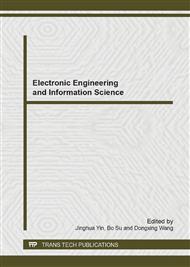p.153
p.157
p.161
p.167
p.171
p.175
p.179
p.183
p.187
Selecting Filter Range of Hybrid Brain-Computer Interfaces by Mutual Information
Abstract:
The hybrid brain-computer interface (BCI) based on electroencephalography (EEG) become more and more popular. Motor imagery, steady state visual evoked potentials (SSVEPs) and P300 are main training Paradigms. In our previous research, BCI systems based on motor imagery can be extended by speech imagery. However, noise and artifact may be produced by different mental tasks and EEG signals are also different among users, so the classification accuracy can be improved by selecting optimum frequency range for each user. Mutual information (MI) is usually used to choose optimal features. After extracted the features from each narrow frequency range of EEG by common spatial patterns (CSP), the features are assessed by MI. Then, the optimum frequency range can be acquired. The final classification results are calculated by support vector machine (SVM). The average result of optimum frequency range from seven subjects is better than the result of a fixed frequency range.
Info:
Periodical:
Pages:
171-174
Citation:
Online since:
July 2014
Authors:
Price:
Сopyright:
© 2014 Trans Tech Publications Ltd. All Rights Reserved
Share:
Citation:


